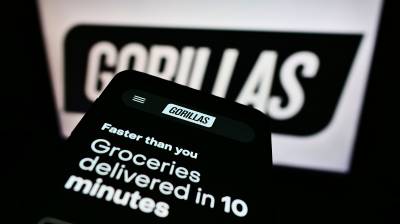
The Covid-19 pandemic has expedited the growth of online shopping. After months of lockdown and quarantine measures, people have revised some of their perceptions about shopping.
• A new survey (source: July 23, 2021, issue of Qvalon) shows that 49% of people are mostly focused on product availability—well ahead of price (36%) and quality (34%), which were the top 2 concerns before the pandemic.
• Brick and mortar shops turned digital to keep their businesses afloat. In fact, global e-commerce has become a $26.7 trillion industry because of Covid-19.
• An omnichannel commerce trend, Buy Online, Pick up in Store (BOPIS) paved the way for 195% year-on-year growth, with 60% of US retailers quickly adopting this strategy.
Shopping online is now one of our most popular web-based activities, with e-commerce revenues projected to reach $6.5 trillion by 2023. This massive growth has come at the expense of traditional malls and retail environments. If you walk or drive along some of the main retail locations in North America, it is not uncommon to see formerly popular stores and restaurants that have been shuttered as a result of the shift from in store to online shopping. In response, some retailers are turning to “dark stores” as another distribution channel to move their products to consumers.
Companies can sell their products entirely online. Dark stores, also known as micro-fulfillment centers, are mini warehouses where orders can be picked and delivered to customers. What makes “dark stores” different from regular stores? A dark store is a retail space that isn’t open for in-store shopping. Imagine the aisles of your favorite grocery store filled with shelves full of the products that consumers love. Shoppers can’t enter because only the operators preparing online orders have access.
Another differentiator is that dark stores are often found in suburbs or on the outskirts of cities, taking advantage of affordable real estate and easy road access. Affordable real estate is particularly important, as a typical dark store in the U.S. is approximately 40,000 square feet. This concept isn’t new. In fact, it has been around for more than ten years. The original dark stores were launched in the United Kingdom. Tesco opened its first dark stores in 2009 to provide online shoppers with the convenience of click-and-collect / delivery. In the U.K., where they first appeared, some dark stores are known as dotcom centers—particularly when they offer click-and-collect and/or click and deliver services.
Why Are Dark Stores Becoming Popular?
As reported in a March 2021 issue of REEF (the largest operator of mobility, logistics hubs, and neighborhood kitchens in the United States and Canada), retailers fulfilling online orders within traditional stores typically encounter several logistical difficulties. These include:
• Inventory management: Inventory tracking systems aren’t always able to keep up with the demands of both in-store and online consumers, resulting in product outages and dissatisfied customers.
• Order accuracy: Order accuracy suffers when store employees (or “pickers”) replace ordered items with what’s available in store.
• In-Store Experience: Store aisles become uncomfortably crowded when pickers are working alongside customers during normal shopping hours.
• Delivery Speed: Traditional stores don’t often have the means to meet next-day or same-day delivery expectations. For context, 68% of Gen Z consumers and 66% of Millennials expect to get their order within 24 hours when they pay for delivery.
Dark stores are designed to make fulfilling online orders as simple as possible. They address the issues outlined above. Some are set up with aisles and shelves, just like a regular store, but without the signage or displays one would see at a local retailer. At these dark stores, pickers shop the store and collect items to fill online orders. Often, they can fulfill several orders at once.
As mentioned above, some dark stores are micro warehouses. They might be entirely automated, using robots to pick and pack customer orders. Others use a hybrid model, with autonomous carts that gather items before sending them to pickers who prepare the order for delivery. Forbes dubbed dark stores the future of post-pandemic retail.
What impact will Dark Stores have on Freight Transportation?
There are a variety of freight transportation business models that are taking shape to serve the last mile online shopping market. Instead of building infrastructure, Instacart pays personal shoppers to go to the store of the consumer’s choice (i.e. Walmart, Costco, CVS, Publix or Loblaws), buy the items requested, and then deliver the entire order straight to the customer’s door. Shoppers can place an order up to two weeks out using Instacart’s Order Ahead feature.
Another breed of couriers with names like Gorillas, Getir and Gopuff send their pickers / drivers to the small warehouses operated by the suburban dark stores. Giles Thorne, an equity analyst at Jeffrey Financial Group in London, England has evaluated the economics of dark stores. He estimates that each store could generate between $3.6 to $6 million in annual sales (source: August 9, 2021 Business Week) and produce a profit of 5% to 10% of sales (as compared to 2% to 4% for convenience stores). Getir which operates both dark stores and a courier fleet was valued at $7.6 billion, more than Macy’s Inc. or Nordstrom Inc.
Are Dark Stores the Future of Retailing?
The advantage of dark stores is that a consumer can select products on the website or mobile app and wait for the courier to arrive and deliver them. They are most common in grocery chains such as Tesco, Whole Foods, and Walmart, but they are also becoming more prevalent in other industries—namely fashion and home furniture. Joe Skorupa, a consultant and strategic advisor for retailers, says that “The keys to success will be execution with a lot of automation and customer analytics to predict buying patterns, specifically at the hyper-local level.”
To stay up to date on Best Practices in Freight Management, follow me on Twitter @DanGoodwill and join the Freight Management Best Practices group on LinkedIn.



















